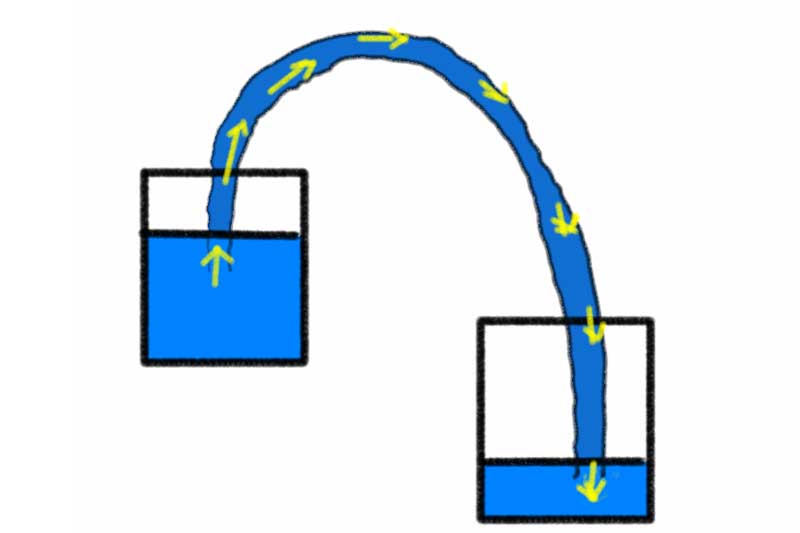
3
DifficultyWater Siphon Experiment
Posted by Allen Douglas / in Physics Experiments
This simple experiment teaches kids how a siphon works. A siphon has the ability to move water up before the water drops without using any pumps or motors. This simple experiment offers a great demonstration of water hydraulics.
Items Needed for Experiment
- 2 clear containers to hold water
- Stand to elevate one container
- Flexible tubing (clear if possible)
- Water (or any safe liquid)
- Tape Measure (optional)
- Food coloring (optional)
EXPERIMENT STEPS
Step 1: Fill up both reservoirs with water. Fill up the upper reservoir 2/3 full of water. Fill up the lower reservoir 1/3 full of water.
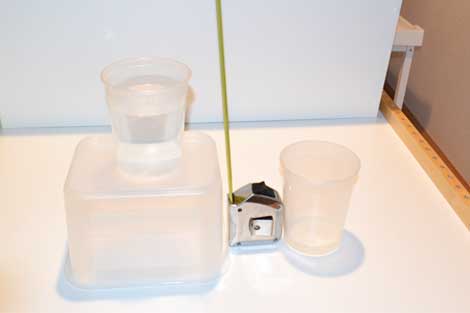
Setting up the Siphon Experiment. The tape measure is used to measure the water surface height difference (potential energy).
Step 2. Elevate the upper reservoir above the lower reservoir by placing it on the stand.
Step 3. Add the food coloring to the upper water reservoir, if desired. The food coloring helps to show the water moving into the tubing.
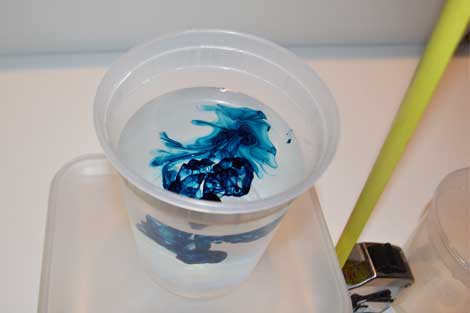
Food coloring is added (if desired) to the upper water reservoir for kids to be able to see the water better.
Step 4. Fill up the tubing completely with water. Seal off the ends with your thumbs.
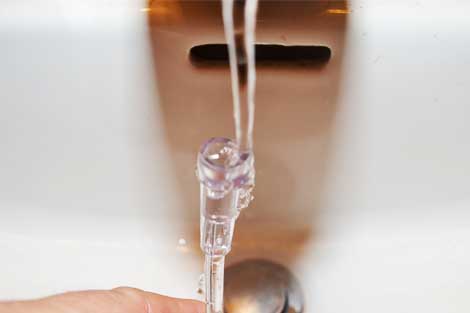
Completely fill the tubing with water or any liquid you want to siphon.
Step 5. Place the tubing in the upper reservoir first, then lift up the center of the tubing. Make sure that the tubing at the upper side is placed under water. Also, make sure the tubing is not placed against the side of the reservoir so the flow is blocked. Place the other end of the tubing into the lower reservoir. This end does not need to be placed underwater. Release your thumbs from the ends of the siphon tubing.
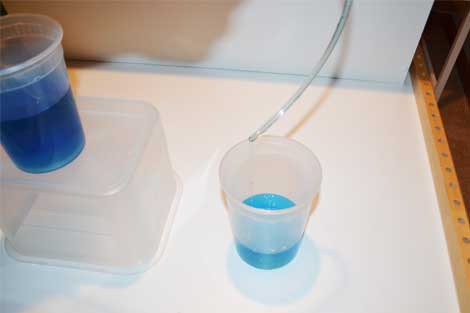
Submerge the uphill side of the siphon tubing underwater before releasing your thumbs to make the water flow uphill.
Step 6. Observe the flow of the water from the upper reservoir uphill into the siphon tubing, then out to the lower reservoir.
SCIENCE LEARNED
THe siphon appears to lift water up without any power or energy. A siphon can lift water, but the energy comes from potential energy. If the weight of the lower portion of the siphon is heavier that the upper portion of the siphon, this is all that is needed to lift the water and move it from the upper reservoir to the lower reservoir. The potential energy difference bewteen the top surface of the upper reservior and the top surface of the lower tank, provides the needed energy to move the water.
-
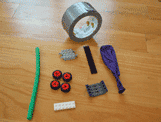
7
DifficultyAir Powered Car Experiment
Make a car that is powered from compressed air.
-

5
DifficultyCompass Experiment
Learn how to build a simple wet compass and dry compass, then compare the two types.
-
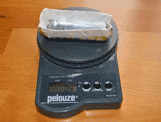
8
DifficultyHow to Calculate Buoyancy Force
Experiment to determine the buoyancy forces acting on a floating and submerged object.
-
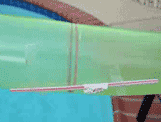
6
DifficultyHow to Make a Balloon Rocket
Use a balloon to propel a rocket across the sky. Teaches kids simple physics concepts.
-
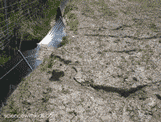
5
DifficultySoil Erosion Experiment
Experiment to teach kids how soil erosion occurs and how erosion is stopped in real life.
